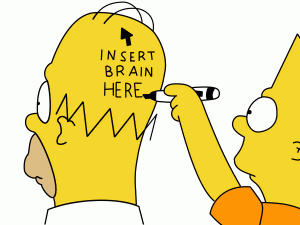BOUNCING BACK: HOW DO YOU REACT WHEN YOU OR YOUR TEAMMATES MAKE A MISTAKE? DO YOU STAY STUCK IN RESENTMENT OR BOUNCE BACK TO THE TASK AT HAND?
The other day I happened to pass by a football game and saw someone kick the ball out of play. Instantly there were groans from the pitch and a loud and matter-of-fact “Sorry!” from the player concerned. I watched on as the ball was thrown back in and the players returned to their jobs. So this got me thinking about teams …
What happened next? Did those groaning at the mistake hang onto it and become distracted, or did they bounce back and regain their focus? And how did the player who made the mistake react; did it affect the rest of his game?
Be it at work, on a pitch or in a group (including a family) moving through difficulties quickly and skilfully can help the team grow, learn and even coalesce. So what happens when mistakes are made, what’s needed to ensure that everyone works together to fix or manage the problem, rather than become resentful?
STAYING STUCK:
Moving through emotions and failed expectations can be challenging for a lot people and sometimes we may find ourselves a little stuck. Staying stuck means not accepting things as they are. Included in this is the inability to forgive oneself and/or other for a mistake and hanging onto the unrealistic wish of a different outcome.
Ultimately making mistakes is a human trait. However much many of us may strive for perfection, all we can ever be is perfectly imperfect! Generally speaking, mistakes are made because our core beliefshave led us astray (and we are caught in a familiar vicious cycle) or because, as fallible beings, there’s been some ‘operator error’.
Stuckness comes from not accepting our imperfection and fallibility, and results in resentment, blame and ’if only’ thinking. Acceptance on the other hand, allows us to find ways of fixing or limiting the damage, or moving forward in another way. Those mistakes that are repeated because of core beliefs, in my opinion, need room for an open forum to discuss what has happened, rather than a blame culture that gives rise to fear-based denial of responsibility.
Therefore, in order to come unstuck we need personal, inter-personal and practical tools. To apply them, we first need to identify what’s needed.
At the personal and inter-personal we may consider:
- How the person relates to themselves
- How the person relates to the team
- How the team relates to the person
THE SITUATION AS ‘THE PROBLEM’, NOT ME AND NOT YOU
How I relate to myself after a mistake can impact on the team. If I regard myself as ‘not-ok’ because I made a mistake, then my ‘all or nothing’ sense of identity will detract from resolving the situation. Moreover, it may eventually produce resentment from others – particularly if I go into approval seeking or repeatedly seeking forgiveness from the team.
Conversely, if I see the situation as the problem, then my focus will be on understanding what happened and on managing it, cooperatively and alone.
The group’s culture to a teammate’s mistake is also important. If mistakes are frowned upon and hard to forgive, resentment can grow. In some cases this can also lead to ostracising tactics such as bullying behaviour, scapegoating and mobbing.
So how do we move out of resentment or self-flagellation when it comes to working with others?
COMMUNICATION:
No matter how quick and efficient a team can be at firefighting, without communication, resentment festers and nothing is ever resolved. So what’s needed?
- A group culture that welcomes open communication
- The ability to explore the cause and find a solution to the situation without blame and look at joint contribution (where applicable)
- Time put aside to talk And in a time-limited fashion
When a team tolerates gossip and blame, resentment and apprehension grow. Moreover, when gossip is tolerated blame and counter-blame become the way to ‘resolve’ conflict. “It wasn’t me! It was you/her/him!” This type of group culture can create apprehension about talking and meetings are often filled with an undercurrent of resentment (passive, passive-aggressive or aggressive language)
On the other hand, groups which encourage talking, while they enhance collaboration they also run the risk of over-processing and long-winded meetings. Therefore a time limit needs to be in place.
In both cases, meetings can do more harm than good.
At the practical level then, discussions are most effective when:
- Everyone is given equal air-time
- Everyone speaks from the ‘I’ and
- Makes understanding, and not fault-finding the aim, and
- Considers the And-Principle
The And-Principle is the inclusivity of contradictions, rather than the exclusivity of either-or thinking. e.g. “I/they made a mistake And it doesn’t make me/them a bad person And it had a costly impact on the team And its important to understand how and why it happened so that it doesn’t happen again/ or understand why it has reoccurred, And we need to refocus.”
Doing so can ensure that resentment does not linger and that the person who has made the mistake does not feel scapegoated and ostracised. Such meetings can then help move things forward, and for the team as a whole to bounce back from the fall and unite in problem-solving.
KNOWING WHAT’S NEEDED, A LESSON FROM THE BEES:
A beehive works with military-like precision because all worker-bees are focused on protecting the queen. Each task in a hive is then dedicated to that end and therefore no role is more or less important than another’s. At times of difficulty everyone jumps into action to deal with the situation at hand to protect the queen.
When it comes to groups or teams, the queen does not become a person but the collective aim. So that to apply the teachings of the beehive, a team needs a clear understanding of what the aim is, what’s required and for everyone’s role to be regarded as equal and valuable. This then ensures that people move together to manage the consequences.
CONCLUSION
Moving through the effects of a mistake or difficulty requires acceptance, communication and flexibility.
Flexibility means letting go of what happened and bouncing back into the present moment; children are great teachers in this, they can cry one minute and laugh and play the next. As adults then it is about letting go of ‘the story’: what happened, why, where, how and who did it. However hard it may feel to not take it personally – and let’s face it, it’s not always easy – can help everyone return to the present and refocus on the task at hand. Applying the And-principle here is often the most effective tool.
FOOD FOR THOUGHT QUESTIONS:
- How quickly are you able to bounce back and find that equilibrium between understanding and over-processing?
- What might your ‘teammates’ need from you to go forward?
- What do you need from them in order to go forward?
Could your workplace benefit from a clearer communication skills training? If so click here





